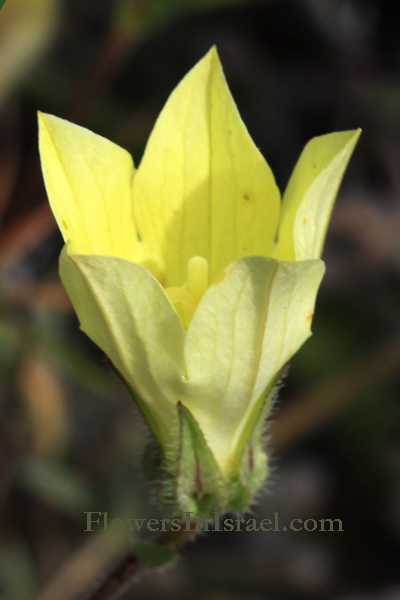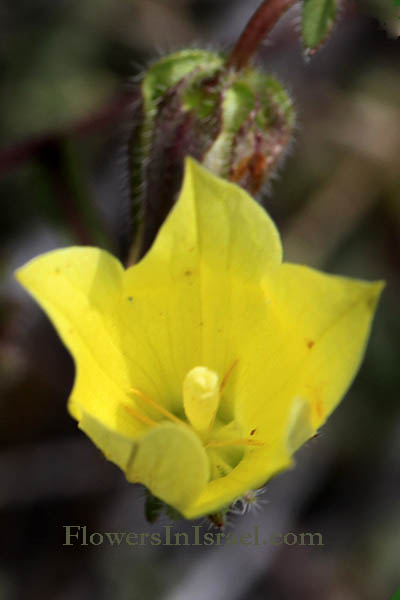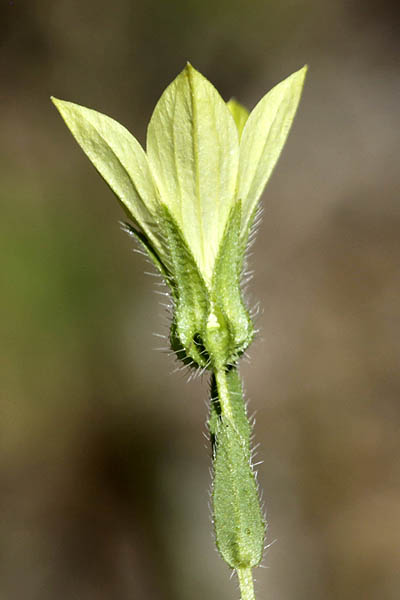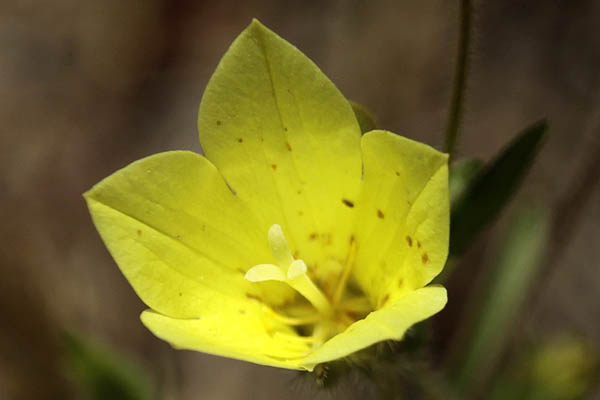Hebrew: פעמונית גפורה, Arabic: الجرسية الصفراء
| Scientific name: | Campanula sulphurea Boiss. | |
| Common name: | Yellow Bellflower | |
| Hebrew name: | פעמונית גפורה | |
| Arabic name: | الجرسية الصفراء | |
| Plant Family: | Campanulaceae, פעמוניתיים |

Location: Bene Zion Nature Reserve |
| Life form: | Therophyte, annual | |
| Stems: | Erect trailing or decumbent, glabrous, pubescent, or hirsute | |
| Leaves: | Alternate, entire, smooth | |
| Flowers: | Yellow | |
| Fruits / pods: | Capsule, elongated to ovoid , obovoid or round, with membranous walls; dehiscence by irregular pores at the bases or the sides; seeds minute, numerous | |
| Flowering Period: | February, March, April, May | |
| Habitat: | Sand | |
| Distribution: | Mediterranean Woodlands and Shrublands, Semi-steppe shrublands, Shrub-steppes, Deserts and extreme deserts | |
| Chorotype: | Mediterranean | |
| Summer shedding: | Ephemeral |

Location: Bene Zion Nature Reserve Derivation of the botanical name: Campanula, campana, campan, "bell" (church); Campanula (bell) shaped, referring to the corolla shape. sulphurea, Sulphur-yellow. The Hebrew name: pa'amonit, פעמונית, from pa'amon, פעמון, bell. The flowers look like bells.

Location: Netanya, Sergeants Grove 
Location: Netanya, Sergeants Grove |